In the realm of symbols, the cross holds a timeless significance that transcends boundaries impacting billions of people worldwide. This blog post delves into the world of crosses exploring types that have evolved over centuries each, with its unique stories of origin, cultural influences, and symbolic meanings.
I. The Classic Cross
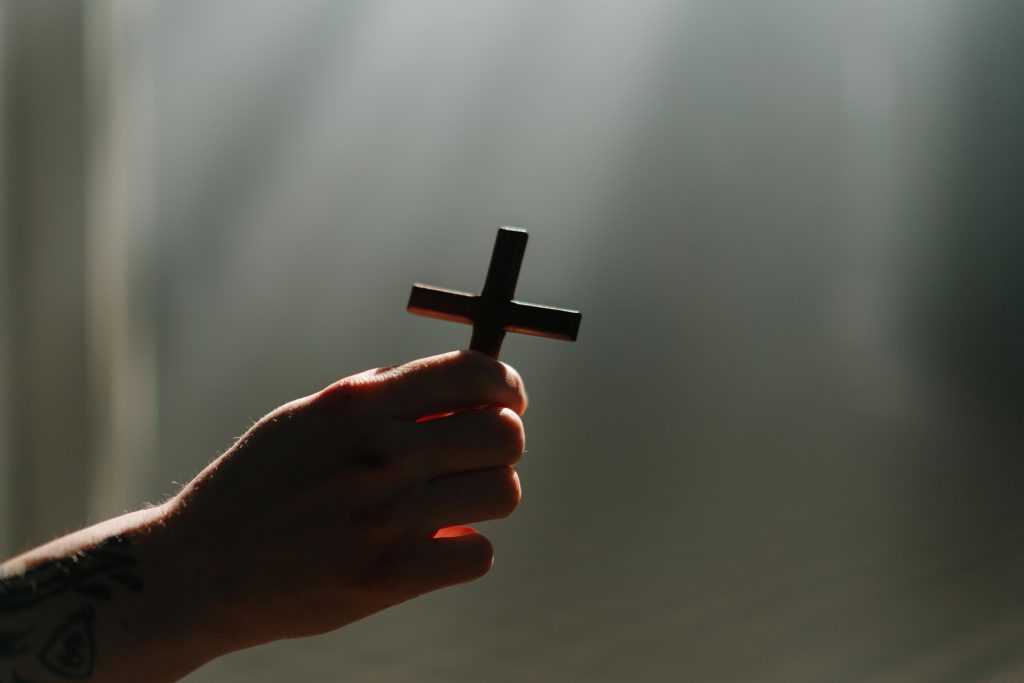
Known as the Latin cross this enduring symbol is intricately woven into the fabric of Christianity. Its distinct design, featuring intersecting beams at angles carries more than visual appeal; it embodies the fundamental tenets of Christian faith by symbolizing Jesus Christ’s ultimate sacrifice on the cross.
To truly understand the essence of the Classic Cross one must journey back to its early roots in Christian history. This iconic symbol traces back to the years of Christianity when faith was rapidly spreading. Jesus Christ was crucified. Exploring its context unveils the meanings associated with this simple yet profound structure.
As Christianity expanded the Classic Cross found its place in art and architecture. Beyond its role, during crucifixion scenes, it became a symbol adorning churches, cathedrals, and religious texts. The humble and straightforward design of the cross serves as a reminder of Christ’s sacrifice.
The Classical Cross stands as a symbol of hope and redemption, for believers blending religious influences in its development. As Christianity spread to regions the cross evolved, incorporating elements that reflected the characteristics of each community. In art, the Classical Cross took on a detailed form, adorned with imagery and religious symbols.

Churches and cathedrals, both modern, showcase the symbol, emphasizing its importance in faith. The Classical Cross, seen in chapels and grand cathedrals, connects believers across history and geography.
More than an object the Classical Cross represents Christian devotion. Originating from Christianity this emblematic cross has endured through time to become a symbol that resonates with believers worldwide. Exploring its origins and evolution, over history reveals the Classical Cross not as an artifact. As a timeless symbol embodying love, sacrifice, and redemption at the heart of the Christian faith.
Ⅱ. The Celtic Cross
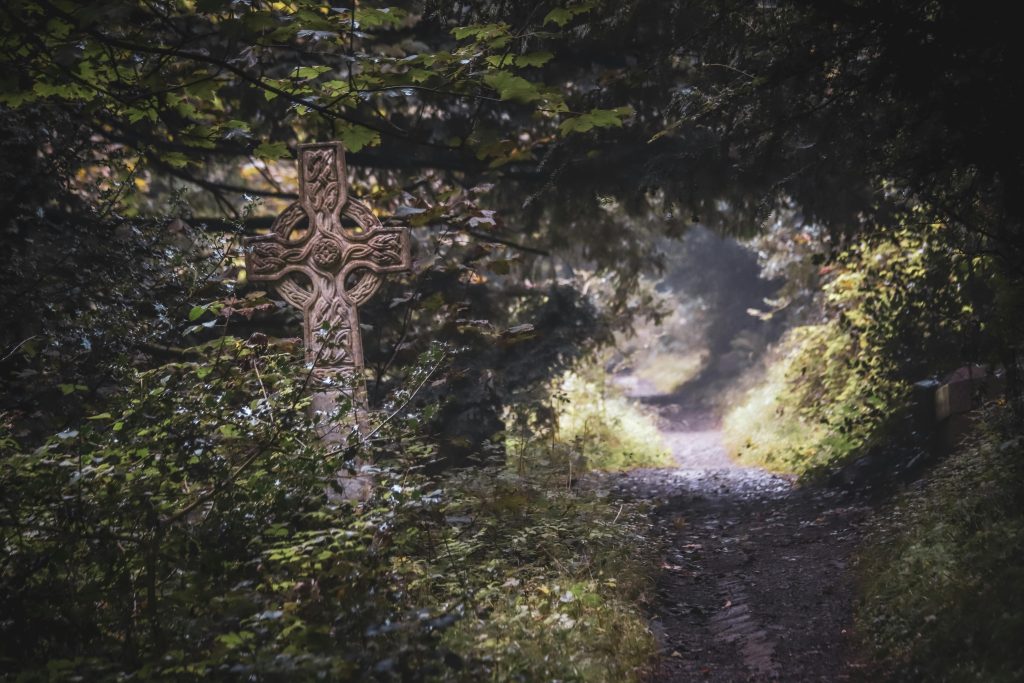
Delve into the realm of crosses, where each crafted knot and intricate design tells a story rich, with ancient Celtic beliefs. These crosses, famous for their designs and often decorated with a feature crossing the arms invite us to explore the standing history that intertwines creativity, symbolism, and profound spiritual faith.
The Celtic cross symbolizes the Celts’ connection to nature and spirituality, urging us to explore their history. Journeying through Ireland, Scotland, and Wales reveals a society deeply appreciative of nature’s wonders.
The complex knotwork on these crosses goes beyond decoration; it acts as a language expressing the unity of all life. The elaborate knots, appearing endless and without beginning or end embody life’s essence by symbolizing the flow of birth, death, and rebirth. By studying how these patterns evolved over time we reveal the Celt’s profound reverence for time passing and their belief in humanity’s timeless link, with divinity.
The Celtic cross is known for its intersection of arms adding symbolism to this ancient emblem. The circular shape often represents either the sun or the moon symbolizing how cosmic influences shape our lives. It symbolizes the nature of seasons the passage of time and the unbroken bond, between beings and higher forces—a reminder that our life’s journey is a perpetual cycle with no clear beginning or end.
As we explore locations adorned with these crosses we witness a fusion of symbols with ancient Celtic traditions. Despite being part of Christianity, the Celtic cross stays linked to nature and spirituality, bridging tradition and modernity.
The elaborate craftsmanship of the Celtic Cross is a testament to both depth and artistic brilliance within communities. The intricate. Circular motifs in this artwork transport us to a realm where boundaries between reality and spirituality blur. Each meticulous detail tells tales of wisdom that bind us to the rhythms of life and the eternal relationship, between humanity and divine elements—a timeless legacy captured in both form and ethereal essence.
III. Delving into the Byzantine Cross
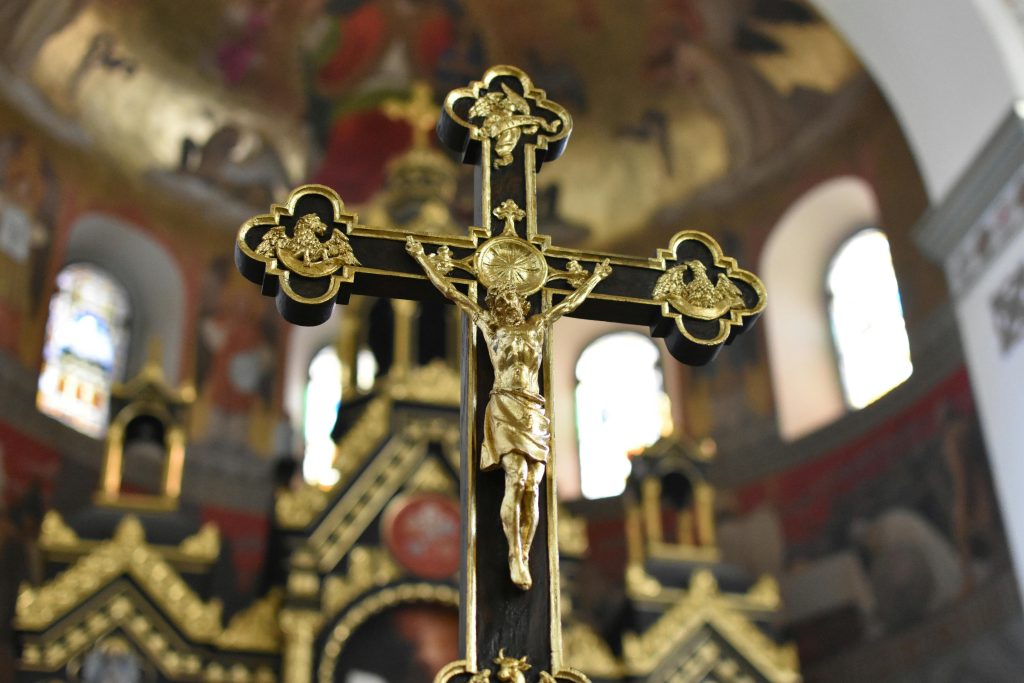
Examining the intricacies of the Byzantine Cross leads us on a captivating journey through its backdrop. Originating from the core of the Byzantine Empire this symbolic cross stands as a tribute, to the legacy of the Eastern Orthodox Church.
Known as the Orthodox Cross or Eastern Cross this emblematic symbol not represents faith. Also carries a multitude of meanings within its intricate design. Every element, from its slanted beams to its ornate embellishments serves as a conduit for the narratives interwoven into Byzantine history.
A notable feature of the Byzantine Cross lies in its slanted arms symbolizing a sense of balance and harmony in its form. This symmetry mirrors the perspective of culture, where spiritual and worldly aspects intertwine seamlessly. It embodies Orthodox principles by uniting divinity with humanity encapsulating teachings within its structure.
Furthermore delving into the array of colors that often adorn Byzantine Crosses unveils their significance. Gold signifies elements while deep blues and rich reds embody qualities inherent in Byzantine spirituality. These colors transcend appeal; they possess deeper connections, to spiritual realms adding layers of symbolic meaning to each visual encounter.
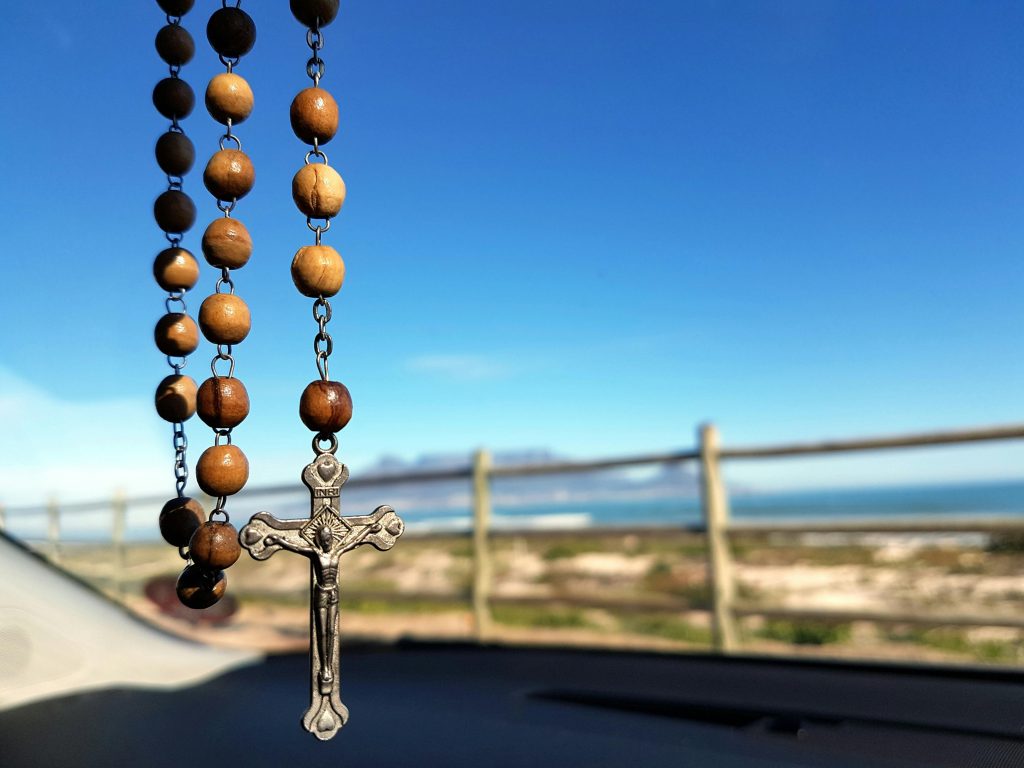
The Byzantine Cross is used as a platform to showcase figures such, as saints, angels, and stories. These detailed representations serve a purpose than decoration; they act as gateways to another world providing believers with a tangible connection to spirituality. The cross becomes a meeting point for the celestial realms prompting contemplation on faith and the teachings conveyed through its adorned images.
In essence, the Byzantine Cross stands as a symbol that represents the significance of the Byzantine Empire. It serves as a bridge between dimensions intertwining history, spirituality, and art into an enduring narrative that holds significance in Eastern Orthodox Church customs. Exploring the symbolism of the Byzantine Cross reveals not an insignia but an entrance into a realm where faith and creative expression merge seamlessly inviting us to grasp the spiritual core that transcends boundaries.
Ⅳ. Uncovering The Ankh — Symbol of Life
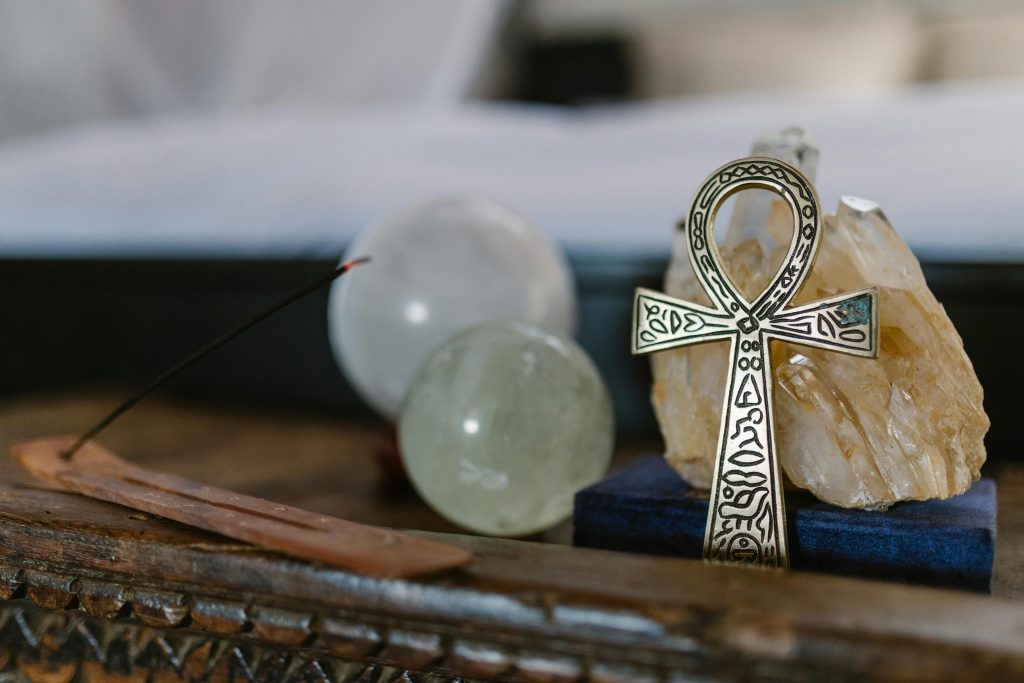
Embark on an exploration of culture where we encounter the Ankh – known as the Key of Life. This symbol holds meaning, beyond its representation; it symbolizes life’s essence and eternal existence.
As we explore the enigmas of civilizations we uncover the mysteries surrounding the Ankh—a symbol revered not only by deities and pharaohs but also cherished as a pathway, to eternal life symbolizing a divine connection that links humans to something celestial.
The Ankh, characterized by its T-shaped top and looped bottom beckons us to decipher the language of the Egyptians. It stands as a representation that embodies religion, mysticism, and cosmology illustrating the interconnectedness of existence, the transition between life and death, and beliefs about what comes. Venturing into the realm of faith unveils a society deeply entrenched in beliefs. Their quest for everlasting life transcended efforts to extend into a journey toward divine realms.
Linked with deities such as Osiris and Isis the Ankh serves as an amulet symbolizing the perpetual cycle of existence. It is thought to grant passage to the afterlife guiding departed souls towards the Osiriss domain—the realm of the underworld. When grasped by pharaohs the Ankh indicated their power and connection to forces. It emphasized the belief that rulers held sway over pathways leading to life.
The charm of the Ankh extends beyond its shape; it intertwines with cosmological convictions. Serving as a bridge between existence and celestial spheres it facilitates communication, between mortals and gods.
Exploring the meanings hidden within the Ankh unveils the wisdom of civilizations regarding the cyclical essence of life where death is not seen as an endpoint but as a transition, into an eternal existence.
ANKH EYE OF HORUS STAINLESS STEEL PENDANT
The Ankh acts as a key to unlocking the mysteries surrounding beliefs and spirituality. Its representation as the Key of Life reverberates through time reflecting a society that perceived life and death as interconnected facets of being. It symbolizes humanity’s quest for immortality, transcending boundaries and resonating with our longing for a connection to divine realms.
Ⅴ. The Budded Cross
Embark on a journey where Buddhism and Christianity intersect through the Budded Cross bridging gaps by blending two heritages. Delving into its intricacies reveals a narrative beyond symbolism delving into the interplay between Buddhism and Christianity. The Budded Cross embodies unity and the peaceful cohabitation of paths. This cross, fusing elements of the Buddhist wheel with the Christian cross urges us to find ground, between these two traditions. Essentially it epitomizes a fusion of ideologies signifying a shared acknowledgment of the interconnected nature of all things. As we navigate through this landscape we unveil threads that bind together spiritual narratives from both Buddhism and Christianity.
In Buddhism, the wheel called “Dharmachakra” represents the cycle of life. Birth, existence, death, and rebirth. The circle of being. On the other hand, the Christian cross symbolizes Christ’s sacrifice. Signifies redemption, salvation, and humanity’s divine connection, with God. The Budded Cross creatively combines these symbols by incorporating the wheel into the cross design.
The blending achieved by the Budded Cross showcases how everything is interconnected in life while emphasizing shared values like compassion, love, and the pursuit of enlightenment found in both Buddhism and Christianity. This cross visually symbolizes a meeting point, between these two paths encouraging us to appreciate commonalities before exploring differences. It captures the essence of unity urging believers from both faiths to acknowledge and appreciate the diversity each tradition brings to their shared heritage.
Upon delving into the significance of the Budded Cross we realize that it not only bridges Buddhism and Christianity but also stands for tolerance and inclusivity. In a world often marked by divisions this cross stands out as a beacon of harmony that invites followers from different backgrounds to recognize and cherish their faith’s fundamental principles.
The Budded Cross emerges as a testament to ideals.
The beautiful mix of symbolism encourages us to embrace the interconnectedness of everything and appreciate the harmony, between spiritual paths. Positioned at the intersection of these two customs the Budded Cross urges us to recognize the beauty that emerges when diverse spiritual beliefs unite fostering a sense of unity that transcends boundaries.
VI. The Significance of Crosses in Contemporary Society
Dive into today’s tapestry, where crosses act as enduring symbols that reach beyond divides and seamlessly fit into the realms of fashion, art, and popular culture. This exploration of eras highlights how crosses have evolved from symbols to accessories while retaining their religious and cultural importance.
In the changing world of fashion, crosses have transcended their origins to become iconic symbols adorning accessories and attire. Walk through fashion runways where designers expertly incorporate cross motifs into jewelry, clothing, and even footwear. Whether it’s the simplicity of a Latin cross the intricate details on crosses or the spiritual allure of an Ankh symbol—their presence goes beyond ornamentation; they make statements, about style and individuality.
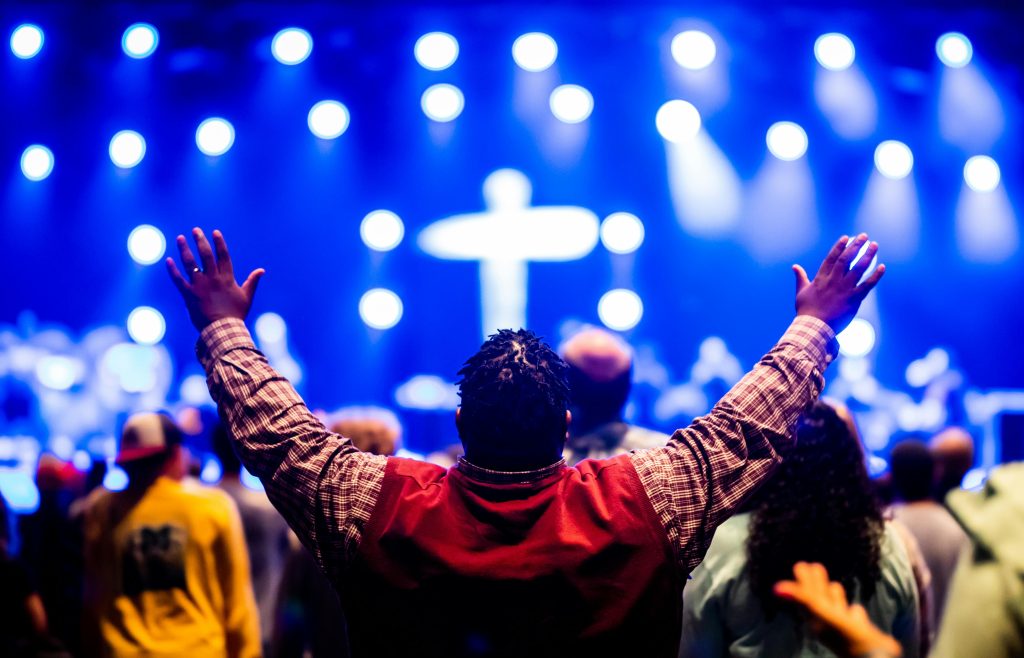
The contemporary trend of expressing oneself through fashion has led to a surge, in accessories ranging from necklaces and bracelets to bold earrings and rings. These pieces hold significance that goes beyond appearance; individuals choose crosses that resonate with their beliefs blending tradition with style preferences.
The Budded Cross blends design elements, making a mark in diverse jewelry styles inspired by different cultures.
Crosses in street style symbolize subculture fusion, bridging sacred and secular realms outside fashion shows. In art, crosses are embraced as timeless symbols conveying spirituality or serving as elements. Through this blend of style and self-expression crosses have transformed into symbols that resonate with a varied audience.
Art serves as a platform for reinterpreting crosses in culture. Explore the works of artists who skillfully incorporate cross motifs into their pieces infusing them with meanings and perspectives. Crosses in art often serve as channels for the exploration of themes such, as identity, spirituality, and the intersection of cultural influences.
Throughout its influence, popular culture has brought crosses into the spotlight establishing them as symbols, in movies, music, and literature. From appearing in films to topping the music charts crosses serve purposes. They can be background elements or key components of a story. The prevalent use of crosses ensures their significance remains strong. Keeps them relevant in our minds.
Ⅶ. In Conclusion
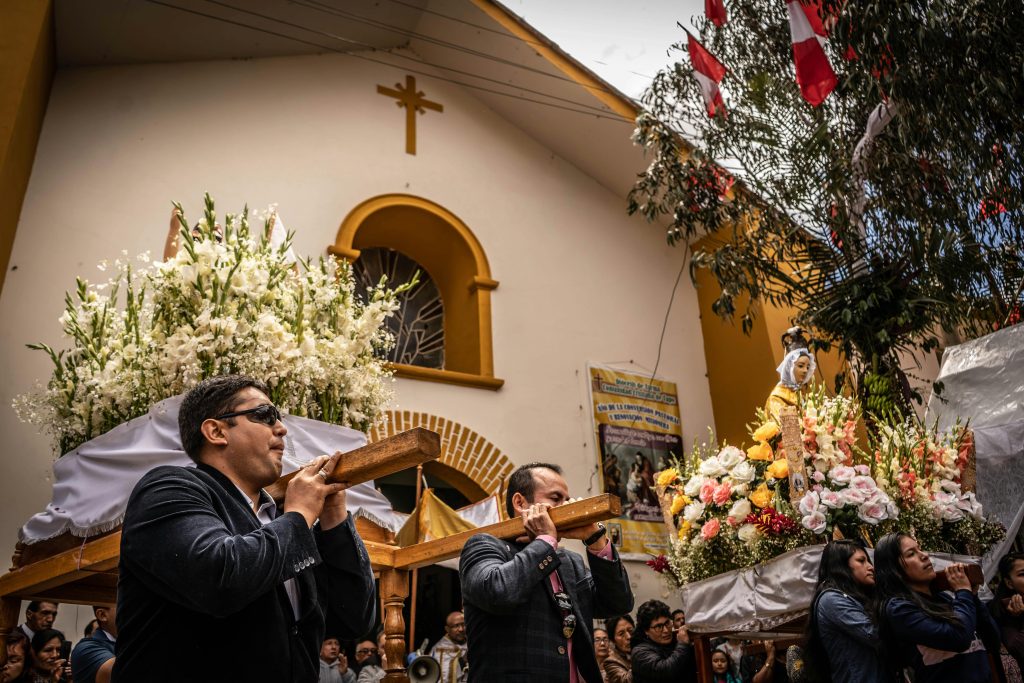
Over time crosses have transformed into symbols that bridge values with expressions. They now take on forms in fashion, art, and mainstream culture serving as embellishments, with deep meanings. This ongoing evolution highlights the versatility of crosses demonstrating their ability to transcend eras and cultural boundaries while maintaining their timeless allure.
Exploring the realm of crosses does not reveal the evolution of a symbol. Also showcases how different cultures and beliefs are interconnected. The various iterations of the cross serve as a reminder of the enduring impact of symbols that surpass ideological divides. Whether as a symbol or style, the cross captivates imaginations, urging exploration of spiritual roots.
Alicia
Alicia is a passionate writer with degrees in English and American Literature. Her journey through the worlds of fashion, culture and design is as fascinating as her literary pursuits. Beyond literature, Alicia is equally an optimist who loves life. Whether it's photography, knitting, pottery, or yoga, she's willing to try it all. Beyond trends and labels, she advocate for sustainability and ethical fashion practices. She believe in the power of conscious consumerism, and she strives to highlight brands that prioritize environmental responsibility and social impact.
2 Comments
Leave a Reply Cancel reply
Recent Posts
Your Goth Christmas Style Guide
11/25/2025Cybergoth Aesthetic
11/11/2025Categories
Related Articles
Acubi Fashion: The Ultimate Guide to the Minimalist Edgy Look
In the fast-moving world of digital trends, fashion cycles seem to refresh...
ByAlicia12/25/2025Moss & Misdemeanor: Fairy Grunge Style and Outfits
The fashion world constantly mixes ideas to create new, unique looks. The...
ByAlicia11/18/2025Cybergoth Aesthetic
The alternative landscape is constantly evolving, but few aesthetics hit as hard...
ByAlicia11/11/2025How to Prepare for the Coming Halloween
The air is getting cooler, and the leaves are changing color. This...
ByAlicia09/24/2025




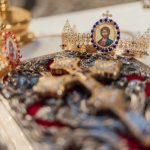





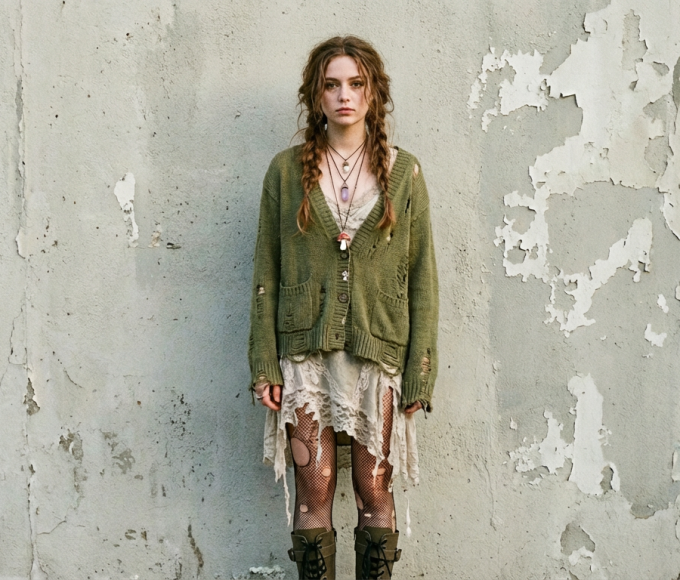


I was recommended this website by my cousin I am not sure whether this post is written by him as nobody else know such detailed about my difficulty You are wonderful Thanks
Thank you very much for your cousin’s recommendation! Very honored that our article provided you with useful information!